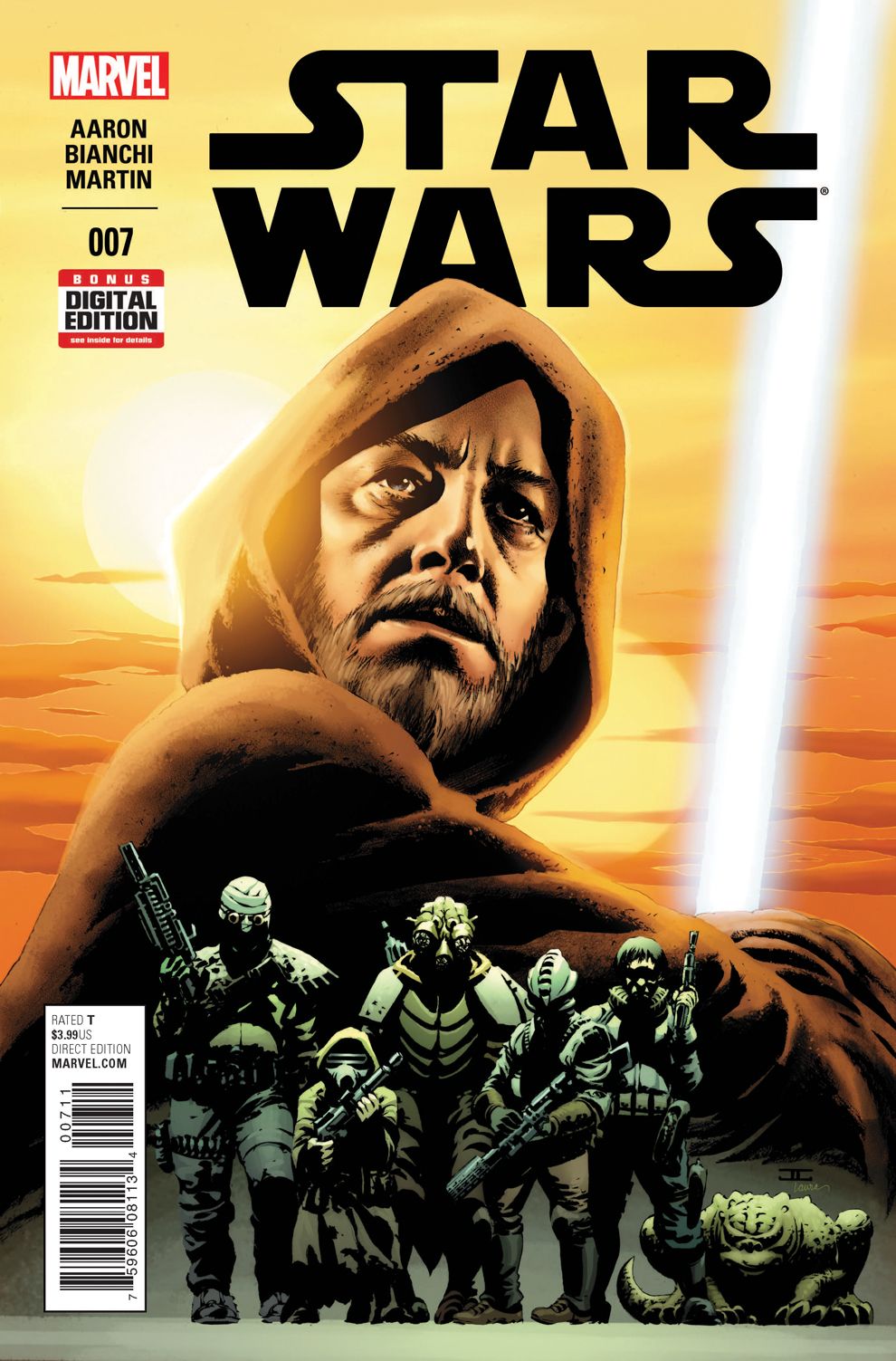"Star Wars" #7 is a one-off issue detailing the early days of Ben Kenobi's time on Tatooine and the frustrations of transitioning his life from one extreme to another. Jason Aaron narrates the issue through Kenobi's journal and delivers a younger, less wise Obi Wan who is impatient and yearns after his past as a Jedi. It's yet another fantastic chapter in the relaunched series, delivered by a writer who seems born to write these characters. Simone Bianchi provides the art and, though some panels suffer odd angles and extreme close ups, the artist does a great job of capturing the sweltering, gritty feel of the desert planet-scape in the midst of an extreme drought.
One of the difficulties of a series that takes place between established stories is that there is only so much room for growth and development for the characters. How does a creative team give readers satisfying momentum while dancing between raindrops? Aaron reaches back and writes an Obi Wan Kenobi who is a few years removed from his exile, frustrated by the injustice that surrounds him on the backwater planet and the gangster mentality of Jabba the Hutt and his cronies. In doing so, Aaron mines a character that showed extreme growth between chronological appearances in the films, which allows the writer to expand and inform that development. Kenobi's job -- to stand as silent guardian over Luke Skywalker as he is raised into a man -- requires deep cover mentality, something the Jedi knight was never known for, dating back to the peace accords in "The Phantom Menace." Bianchi displays the character's frustration through close ups of his clenched fists and gritted teeth, especially as Jabba's men take water from the downtrodden moisture farmers in and around Mos Eisley. The narration is clean and not overwritten, allowing the story to tell itself in the journal and letting the artist interpret those visuals. It's a strong storytelling detail that isn't always done properly but is well-tailored to this issue. There are instances where Bianchi's details can get in their own way just a bit, interrupting the rhythm of the story as readers sort out what they are seeing. For each of these small instances, though, there are awesome moments like Kenobi's dismantling of Jabba's gangsters in the dark while trying to guard a young Skywalker, who is still unaware of the Jedi's presence.
Aaron tells the story from a wiser Kenobi's perspective, looking at the way he has matured and what those hard times did for his character. In denying his more impetuous instincts and implementing the patience required for his new lot in life, Obi Wan becomes Ben, who then teaches himself the value of his gifts and the power in using it only when necessary. In this sense, the Force is viewed as a martial art, a discipline that should only be used in moments of extreme need. It foreshadows the stoic nature of the narrative and gives readers new depth to a character whose time in exile hasn't been completely explored.
"Star Wars" #7 benefits from the structure that editor Jordan D. White implemented in his "Deadpool" series, as longer arcs are broken up by single issue tales that delve into backstory. After the high action of the first arc and the big reveals of the second, this issue was a great breather that also provides some excellent backstory.

